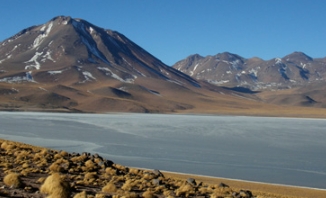Climate plays a significant role in shaping the Earth’s landscapes, a field of study known as climate geomorphology. This branch of science explores the relationship between climate patterns and the physical features of the Earth’s surface.
Effects of Temperature and Precipitation
Temperature and precipitation are two key elements of climate that influence landforms. For example, glaciers are formed in cold regions where temperatures remain below freezing for extended periods. The movement of glaciers can carve out valleys and create moraines, or deposits of rocks and sediment.
In dry regions with limited precipitation, features such as sand dunes and desert pavement form as a result of wind erosion. In contrast, areas with high rainfall may experience more erosion from intense storms and flash floods.
Coastal Landscapes
Climate also plays a vital role in shaping coastal landscapes. Coastal erosion, caused by the combination of wave action and weather patterns, can lead to the formation of cliffs, sea stacks, and arches. Rising sea levels resulting from climate change are also impacting coastlines around the world, leading to accelerated erosion and changes in coastal landforms.
Impact of Climate Change
The ongoing changes in Earth’s climate, particularly the warming of global temperatures, have a profound impact on the planet’s landscapes. Melting ice caps and glaciers contribute to rising sea levels, while more frequent and severe weather events can lead to increased erosion and landslides.
Climate change is also altering the distribution of vegetation and changing the patterns of rainfall in many regions. These shifts in climate patterns can have cascading effects on landscapes, impacting everything from soil composition to the prevalence of wildfires.
Future Research and Conservation Efforts
As climate change continues to shape the Earth’s landscapes, there is a growing need for research and conservation efforts to better understand and protect these areas. Climate geomorphologists play a crucial role in studying how climate influences landforms and ecosystems, helping to inform strategies for sustainable land management and conservation.
By uncovering the role of climate in shaping Earth’s landscapes, researchers can gain valuable insights into how our planet is changing and what steps can be taken to mitigate the impacts of climate change on the environment.Understanding the intricate relationship between climate and landforms is essential for preserving the Earth’s natural beauty and biodiversity for future generations.

